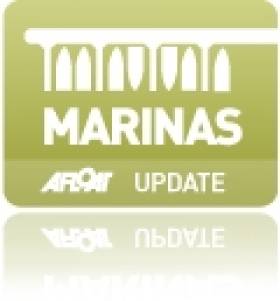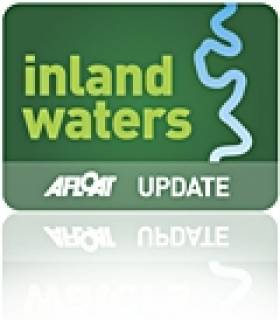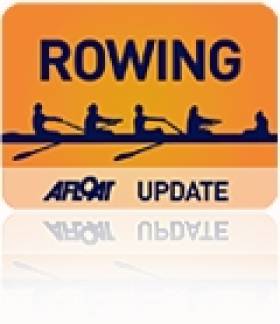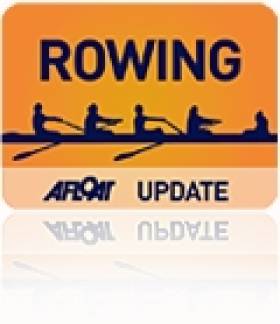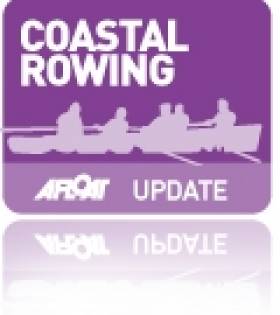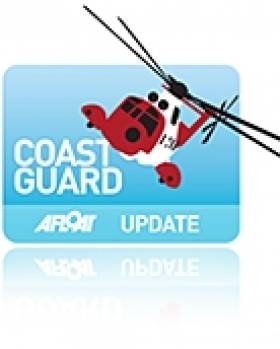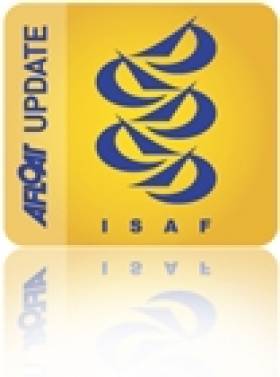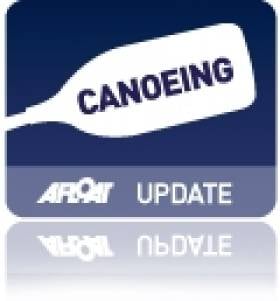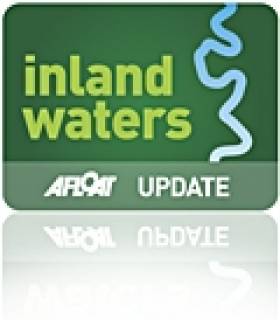Displaying items by tag: Dublin
Grand Canal Marina, Dublin City. Yacht & Boat Berths in Dublin
The Grand Canal Marina in the inner dock of the Grand Canal Basin has a landmark 'Box in the Docks' building familiar to many Dubliners. The 50-berth facility opened in 2004 and has become an asset for boaters in the city centre especially during festivals such as the recent Tall Ships visits, permitting boating access and overnight stays (albeit via a sealock) in Dublin city.
Rent & Navigate Your Own Canal Barge Through Dublin City
#dublinbarge – After one hour personal instruction on how to drive, moor and navigate a barge through a lock, you can drive your very own barge in Dublin city centre.
The barge 'Scéal Eile' is a new and exciting form of accommodation offered at Grand Canal Dock, Dublin 2.
Dublin Barge Hire is Dublin city centre's first self-catering cruising barge.
Not only is this an exclusive and unique place to stay, the barge is a form of transport as well.
Guests will have access to the secure and serviced Marina in Grand canal Dock and from here you can navigate through seven locks up to Portobello.
It is a four hour round trip along an historic stretch of canal, originally opened in 1796.
The barge has a capacity of 4 adults and 2 children. For two nights based on two people sharing the package is priced at €300.
'Scéal Eile', a 50 x 10 foot (15 x 3.1 m) barge was built in 2006 to a high specification according to its owners. They say the barge has a warm inviting interior and a comfortable living space that makes this self-catering barge an environment for a holiday break.
It contains a multi-fuel stove with a back boiler which makes a stay on the barge during winter a cosy experience.
More on www.dublinbargehire.com
Neptune Rowing Regatta To Stage Over 200 Races
# ROWING: Neptune Rowing Club will hold their 31st annual regatta on Saturday over a 1200 m course at Islandbridge. This is the first regatta of the season in the Irish rowing calendar, and it has attracted a big entry, with 204 races. Because of the large entry there will be 26 preliminary races held on the Friday evening between 6 and 7.30 pm.
Racing on Saturday is scheculed from 8.30 am to 6.24 pm, with a race every three minutes throughout the day. The feature race will be the men's senior eights at 5.51 pm, which is a straight final between a Neptune/Commercial composite crew and a visiting English crew from Broxbourne Rowing Club with Irishman Albert Maher on board. Broxbourne will also compete in the men's intermediate eights and Albert Maher will compete in the senior sculls.
The women's senior single sculls is a straight final between Sarah Dolan and Eimear Lambe, both from Commercial. The men's novice single sculls has attracted an entry of 37 scullers, with 31 entrants from Dublin University!
Other visiting crews to the regatta are Portora, Bann and Belfast Rowing Clubs from Northern Ireland, as well as a good representation from all over Leinster. There will also be crews from Waterford Boat Club and Fossa from Munster and Sligo R.C. from Connaught.
UCD Rowers Take Gannon and Corcoran Cups Again
# ROWING: UCD produced an exact repeat of last year in the Colours Races on the Liffey today by winning the senior men’s and women’s events and also taking the novice men’s race. Trinity again won the women’s novice eights race with a dominant performance.
The senior men’s race was won in the first 20 metres: UCD’s big crew gained a crucial advantage and exploited it so competently that they had the race in the bag by the Four Courts. The win gave Dave Neale a record sixth Gannon Cup crown.
The UCD senior women also started well and established a good lead, but Trinity nipped away at them down the course and lost by only a half length.
The men’s novice eight race ended before the line, as Trinity crashed into the wall after Watling Street Bridge due to a snapped steering line. UCD had taken the furthest south arch in Winetavern Street bridge, prompting a Trinity objection, but the race umpire said that he had told the crew to avoid the marked centre lane due to a possible hindrance there.
Colours Races 2013
Men – Eight, Senior (Gannon Cup): UCD (L McCarthy, M Bailey, P Moore, A Sheehan, D Neale, J Nihotte, G Duane, P Grogan; cox: K Joyce) bt Trinity 4l
Eight, Novice (Dan Quinn Shield): UCD bt Trinity not rowed out
Women – Eight, Senior (Corcoran Cup) UCD (A O’Riordan, K Joy, O Finnegan, S Bennett, C Ni Reachtagain, G Collins, A Gilligan, B Lait; cox C McGowan) bt Trinity ½ l
Eight, Novice (Sally Moorhead Trophy): Trinity bt UCD easily.
Body Recovered From Irish Sea Could Be Missing Rush Man
#Missing - A body recovered from the sea off north Co Dublin yesterday may be that of a man who went missing from Rush at Christmas.
The Irish Independent reports that a post-mortem is being carried out on the body to confirm if it is that of 24-year-old Paul Byrne, who was last seen in the early hours of Christmas Day.
Fishermen in the Irish Sea made the grim discovery in their nets yesterday and brought the body to Skerries harbour after 8pm.
The Irish Independent has more on the story HERE.
East Coast Rowing Council Announces 2013 Regattas
#CoastalRowing - The East Coast Rowing Council has announced its list of coastal rowing regatta fixtures in Dublin, Wicklow and Wexford for the 2013 season.
Commencing with the Greystones Regatta on 26 May, the schedule also includes events in Arklow (2 June) and Dalkey (9 June), the Stella Maria Regatta in Ringsend on 16 June and the Bray Regatta on 30 June.
July will see two events, the St Patrick's Regatta in Dublin's Docklands on 14 July and St Michael's Regatta off Monkstown and Dun Laoghaire on 28 July, while the Wicklow Regatta will mark the end of 2013's summer events on 5 August.
Locations of the various regattas and suggested viewing points are available HERE.
Howth Coast Guard Reviews A Busy 2012
#Coastguard - Howth Coast Guard responded to 53 calls throughout 2012, with its 25 volunteers clocking up more than 4,000 man hours.
In its review of the year, the north Dublin unit of the Irish Coast Guard noted that while its safety boat Grainne was dispatched to fewer calls on the water, there was an increased number of cliff and beach incidents to attend to, particularly in the Clontarf and Dollymount areas.
Howth also became one of the first search and rescue teams in the State to avail of the Irish Coast Guard's new side scan sonar.
As previously reported on Afloat.ie, the coastguard saved 161 lives throughout a busy 2012 that saw the network respond to almost 2,000 call-outs nationwide.
And 2013 so far has been off to a busy start, marked by a dramatic cliffside rescue in Donegal on New Year's Day.
ISAF Rolex World Sailors of the Year for 2012 Announced Tonight
#ISAF - In just a few hours the International Sailing Federation (ISAF) and Rolex will announce the 2012 ISAF Rolex World Sailors of the Year in Dublin.
The award ceremony will take place during a dinner hosted at the historic Mansion House in the heart of the capital, and will be attended by many of the world’s top sailors and delegates to the ISAF Annual Conference taking place in Dun Laoghaire.
This year's winners as always are selected by the ISAF Member National Authorities (MNAs), the national governing bodies for sailing around the world, who have been invited to vote for one male and one female nominee they believe most deserves the award for their efforts during the nomination period.
This year there are five male and four female nominees who have been shortlisted for the ISAF Rolex World Sailor of the Year Awards based on their achievements during the qualifying period of 1 September 2011 to 31 August 2012.
HM King Constantine, ISAF President of Honour, will announce the winners, each of whom will be presented with the prestigious ISAF Rolex World Sailor of the Year trophy and a distinctive Rolex timepiece.
The 2012 nominees are:
Male
- Ben Ainslie (GBR) - Finn - London 2012 Olympic Gold Medallist & 2012 World Champion
- Mathew Belcher & Malcolm Page (AUS) - Men's 470 - London 2012 Olympic Gold Medallists, 2011 and 2012 World Champions & 2011-2012 ISAF Sailing World Cup Champions
- Nathan Outteridge and Iain Jensen (AUS) - 49er - London 2012 Olympic Gold Medallists & 2011 and 2012 World Champions
- Loïck Peyron (FRA) - Outright Around the World Record
- Tom Slingsby (AUS) - Laser - London 2012 Olympic Gold Medallist & 2011 and 2012 World Champion
Female
- Támara Echegoyen, Ángela Pumariega and Sofía Toro (ESP) - Women's Match Racing - London 2012 Olympic Gold Medallists
- Helena Lucas (GBR) - 2.4mR - London 2012 Paralympic Gold Medallist & 2011-12 ISAF Sailing World Cup Champion
- Saskia Sills (GBR) - RS:X - ISAF Youth Sailing World Champion & European Youth Champion
- Lijia Xu (CHN) - Laser Radial - London 2012 Olympic Gold Medallist
Find out more HERE about the nominated sailors and their achievements.
Experience Tells in Rough and Tumble of Liffey Descent
# CANOEING: Two K2 boats with a very marked combination of experience and youth led the way home at the Liffey Descent today. Deaglan O Drisceoil (47) and Tom Brennan (20) won in a fine time of one hour 47 minutes and 54 seconds, while the father-and-son combination of Malcolm Banks (50) and Liam Banks (20) followed them in. The K2 of Peter Egan and British international paddler Jon Simmons were third, although they suffered a capsize at Straffan weir, where there were a series of chaotic collisions.
Mickie Brennan of Thomastown Paddlers was an impressive winner in the K1 class, taking this title for the first time. Kevin Pierce of Wildwater Kayak Club was second, with Brennan’s clubmate Anthony Forristal third.
The good conditions made for a satisfactory day out at the new venue of Garda Boat Club. The prizes were presented by Kieran Mulvey and John Treacy of the Irish Sports Council.
Liffey Descent, Straffan to Islandbridge, Saturday (Selected Results)
K1 – Senior Men: 1 M Brennan (Thomastown Paddlers) 1:54.33, 2 K Pierce (Wildwater KC) 1:55.10, 3 A Forristal (Thomastown Paddlers) 1:59.11. Senior Women: A Smith (Wildwater KC) 2:18.35. Masters: 1 G Mawer (Salmon Leap) 1:55.09
K2 – Senior: 1 D O Drisceoil, T Brennan (Salmon Leap) 1:47.54, 2 M Banks, L Banks 1:48.10, 3 P Egan, J Simmons 1:48.49. Mixed: 1 J Egan, B Farrell (Salmon Leap) 1:56.07. Junior: 1 B O Casaide, R Brady (Salmon Leap) 2:11.40. Masters: A Seaford, J Treadgoud (Reading) 2:06.34. Veteran: 1 T Dillon, P Moroney (Wildwater KC) 2:04.04.
Touring Kayak Double: 1 P Scott, M Cooper 2:06.17, 2 S Martin, A Martin (Richmond) 2:06.49, 3 G Collins, B Gallagher (Salmon Leap) 2:12.07.
Wildwater – Senior Men: 1 A Hamel 2:04.16, 2 I Mac Giolla (Salmon Leap) 2:05.07, 3 J Gallagher (Galway KC) 2:13.57.
Canadian Triple: 1 S Doyle, M McGrath, D Doyle (Tullow) 2:53.31, 2 D Carroll, L Griffin, C Cullen 3:01.47, 3 C Slevin, N Slevin, M Slevin (32nd Limerick Scouts) 3:03.52.
Canadian Double: 1 B McNulty, D Bradburn (Chester) 2:39.36, 2 A Magrath, P Tennant (Paddleplus) 2:35.10, 3 N Canavan, T Marron (Mid Antrim) 2:38.47.
Canadian Single (ICF): 1 A Hales (Czech Canoe Team) 2:04.33, 2 D Jirka (Czech) 2:05.01, 3 M Novak (Czech) 2:05.40. Canadian Single: 1 C Smith 2:54.08, 2 K McCabe (Lisburn City) 3:16.47, 3 A Redmond 3:24.20.
General Purpose – Senior Men: 1 S Hendrick (Ribbontail Paddlers) 2:21.33, 2 D Horkan (Moy) 2:21.48, 3 M Redmond (Wildwater KC) 2:26.28. Senior Women: 1 H Clarke 2:32.56, 2 J Kilbride 2:39.39, 3 E Kelly (Castleknock College) 2:40.19. Junior: R Mac Ghiolla Rua (Celbridge) 2:28.59, 2 P Deering (ICU) 2:29.47, 3 G Doolan (Celbridge Paddlers) 2:36.41. Junior Women: C Nic Ghiolla Rua (Celbridge) 2:56.26. Masters: R Vincent (Saor Valley) 2:17.05, 2 J Keegan 2:23.33, 3 N Butler (DBSC) 2:25.30.
Minister Proposes Dublin-to-Galway Cycle Path Via Royal Canal
#ROYAL CANAL - The Royal Canal towpath is an "obvious candidate" for a stretch of the new cross-country cycle route from Dublin to Galway proposed by the Minister or Transport.
The Irish Times reports that Minister Leo Varadkar has instructed the National Transport Authority (NTA) to examine possible routes for the project, which would involve development of the present towpath along the waterway from Mullingar to Maynooth.
The NTA is already funding preparatory work with a view to upgrading the canal path as a premium quality Greenway Route for cyclists and pedestrians in the Fingal area from Ashtown to Westmanstown - and will now look at the feasibility of extending this project through Leixlip to Maynooth.
“A national off-road cycle trail would be a first for Ireland and would be a great tourism asset," said the minister, who added that the scheme has "the potential to bring in at least €15 million per annum, much of that going straight into local businesses along the route.”


























